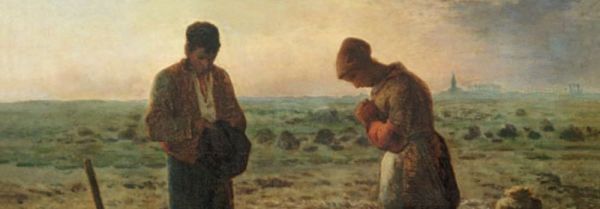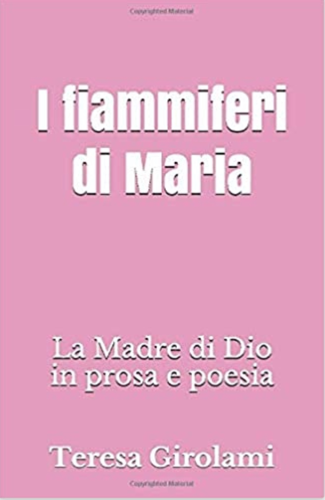(Jn 13:1-15)
Complete Trust: the emblematic Action that creates pure people
Let us introduce the meaning of the Lord's washing of the feet, an emblematic gesture that the Synoptic Gospels evoke in the Breaking of Bread.
In ancient Israel, the patriarchal family, the clan and the community were the basis of social coexistence.
They guaranteed the transmission of the identity of the people and ensured protection for the afflicted.
Defending the clan was also a concrete way of confirming the First Covenant.
But at the time of Jesus, Galilee suffered both from the segregation dictated by the politics of Herod Antipas and from the oppression of official religiosity.
The spineless collaboration of the ruler had increased the number of homeless and unemployed people.
The political and economic situation forced people to focus on material and individual problems or those of their immediate family.
At one time, the identity that bound the clan and the community together guaranteed an internal solidarity, expressed in the defence and assistance given to the less fortunate members of the people.
Now this fraternal bond was weakened, rigid, almost contradicted, partly because of the harsh attitude of the religious authorities, who were fundamentalist and lovers of a pedantic purism that was opposed to mixing with the less well-off classes.
The law (written and oral) ended up being used not to promote the acceptance of the marginalised and needy, but to accentuate divisions and ghettoisation.
This situation was leading to the collapse of the most vulnerable sections of the population.
In short, traditional devotion - which loved the alliance between throne and altar - instead of strengthening the sense of community, was used to accentuate hierarchies; as a weapon that legitimised a whole mentality of exclusion (and confirmed the imperial logic of divide and rule).
Jesus, on the other hand, wants to return to the Father's Dream: the unavoidable dream of brotherhood, the only seal on the history of salvation.
According to a happy expression of Origen, the Eucharist is the ever-open wound in Christ's side; but Vatican II did not say a single word about the many forms of Eucharistic devotion.
In order to help us fully understand his Person, the Council Fathers were well aware that Jesus did not leave a statue or a relic. He preferred to express himself in a gesture that challenges us.
In the Jewish world, every family gathered around the table in the evening, and breaking bread was the most significant moment of their experience of conviviality (and memory of giving oneself to others).
The only bread was broken and shared among all the family members - but even a hungry poor person could come to the door, which was not to be locked.
Bread and wine, products that had assimilated the energies of heaven and earth, were recognised with spiritual sensitivity as gifts from the Creator for the life and joy of humanity.
In that culture, bread is a staple food. But our life is only complete if there is also an element of celebration: wine.
Even today, bread is not cut with a knife, out of respect for its sacredness: it is only broken. It contains concrete existence.
This is why Jesus chose the Banquet as a sign of his Person, his life, his word, his risky undertaking and new happiness, given as food.
During family meals, bread and wine were not perceived as manna, that is, as natural and raw products. Nor was it simply a matter of eating to regain strength.
The wheat and grapes also brought together all the varied contributions of the household.
Around the table, each person saw in the bread and wine the fruit of their labour: clearing the land, ploughing, sowing, reaping, pruning, harvesting and pressing.
Women saw their labour in the bread: grinding, kneading, baking. Even children could remember something of their own, because the little ones lent a hand (e.g. drawing water).
Dinner was a celebration of harmony. The table was a place where young people were taught to perceive existence in unity, rather than in indifference.
This was done with gratitude for God's gifts and an awareness of their own contribution, which had (truly) achieved its goal, in a spirit of synergy and communion.
Contributions, resources and abilities were offered in service to the life of all.
In the Eucharistic gesture, Jesus says: the new heavens and the new earth do not correspond to the world in which everyone rushes to reap for themselves or their circle, in order to grab the maximum resources.
His Kingdom? Everyone is invited and brothers in harmony, no one is master or ruler - destined to stand before or above (even if quicker than others) even in Heaven.
Even the Apostles - called by Jesus to be with him but still remaining at a safe distance from him (cf. e.g. Lk 9:10, 12) - are not the owners of the Bread, but those who must offer it to all (vv. 13,16), to create abundance where there is none.
To enliven meetings on the theme of the Eucharist and to internalise how there has been a decisive evolution in the Catholic Church itself in understanding the effectiveness of the Sign, I like to compare two great works of art.
Raphael, in his so-called Disputation of the Sacrament, depicts a sacred and static world. Today we would say (at first glance) that it is almost plasticised.
It is an environment that seems entirely predictable and characterised by a specific social, cultural and spiritual model, where everyone is placed according to their origins, position, status and rank.
Arcabas, a French artist who recently passed away, paints a picture that seems devoid of exclusive, distinct and titled protagonists: as if cut off, or (better) focused on the simple gesture.
To put it eloquently: the trappings of opulent decorations or prominent roles have no place in this vision of life!
In the work of the contemporary painter, we see the sobriety of a Person and a well-centred missionary spirit (which scratches, but makes us lose our heads much more than beautiful scripts); because in the world of Love, the best is yet to come.
We are constantly questioned...
Arcabas illustrates a simply laid table: a plate that is certainly not from the best collection, a glass of wine without frills, a tablecloth simply laid on the table and characterised by its folds (not even ironed) that recall everyday life.
And above all, the normal gesture of breaking bread, step by step, with its crumbs that are neither fluffy nor white. In other words, the Eucharistic Banquet that is not for the afterlife - who knows when that will be.
(For almost a thousand years, the Catholic Church celebrated with daily bread, as the Orthodox Church still does. As evidence, we still have very large trays-patens, now reduced to small plates).
The 'Hour' arrives... An emblematic action in John's Gospel, which does not formally recount the institution of the Eucharist.
This is the meaning of breaking bread: what it means to enter into communion, for the apostle who overturns hierarchies and subverts the criteria of purity, uniformity, compactness and glory.
In the fourth Gospel, only two Beatitudes are proclaimed:
'Truly, truly, I say to you, no servant is greater than his master, nor is a messenger greater than the one who sent him. If you know these things, you are blessed if you do them' (Jn 13:16-17).
And to Thomas: "Blessed are those who have not seen and yet have believed" (Jn 20:29b) - not because effort is a means of accumulating pain and merit, and thus pleasing God.
The two Beatitudes of John guarantee the tracks on which the believer finds his full realisation and the wonder of happiness: the practice of charity that recovers all that is scattered (including that of others) in the adventure of Faith.
Before and during ritual meals, the pious people of Israel performed ablutions with water to celebrate the separation between the sacred and the profane, the pure and the impure.
At the head of the table, hands were washed by a servant or the youngest of the guests.
With Jesus, tradition is overturned from within, leaving us astonished.
For a Jew, washing another person was a gesture that had to be refused, even if reduced to slavery, so as not to dishonour the people. Instead, the Messiah prostrates himself and has the freedom to wash (not even the hands, but) the feet.
This is an absurd revelation of the Face of God, which shatters countless mannerisms, hopes of artificial prestige, acts of submission, and grotesque acknowledgements - advanced by princes of the church.
Not only an invitation to serve one's neighbour... a gesture to be imitated that proclaims the character of humble service of the ministry: it is also a sign of purification of his own - like a new Baptism, which immediately makes one part of God's world.
This 'washing' is a figure of the Person and Mission of the Son in favour of mankind - all now enabled to pass (and to bring others to pass) from this order to the Kingdom of the Father.
The Master gathers around him a group of disciples - even if they are not very convinced, but made pure - not because he aims to form a school, distinct from others or even unilateral, but to introduce them to Love, in the passage from slavery to the freedom of the Free (who comes down).
God does not identify people, nor does he superimpose his own thoughts on the history and sensibilities of the people. By bending down, he transcends roles, club spirit, ideas and certificates. This is indeed an exemplary initiative.
In fact, in his Exodus, he traces the new path of the people, even of those who oppose him - and this is disconcerting, it seems unacceptable. Peter is eager to command: he does not want to enter into a logic that manifests (in community leaders!) a God who is a servant of men, independent of their past.
By lowering himself to the level of a slave who lays down his clothes, the Lord wants to humanise us by recovering the opposites rooted in each of us...He even admits contestation - highlighting it and healing it (unless we remain like Judas, stubbornly attached to external seductions and false spiritual guides - to the clichés of belonging-gain).
Finally, Jesus does not take off his apron before putting his clothes back on: it is the only uniform that belongs to him. That kind of clothing remains on him: he even takes it with him to Paradise.
He did not play the part of the servant in order to return to heaven and lord it over others. He does not influence anyone.
The Life of the Father follows us on every path, to make us feel adequate: One Body with the Son, to whom he has entrusted everything (v. 3).
Total flowering for us too; indestructible, eminent, in itself free of hidden deadly germs.
His trust is transmitted in the history of salvation and unfolds to the undecided and imperfect, but his blood relatives in the Son. Ready to lift us up to an existence that no longer extinguishes being - and we are eager to make it flourish, instead of boycotting it or borrowing it.
Adopted children: this is not a diminution, but the distinguished recognition of an equality that does not clash.
In ancient times, when a sovereign designated his successor to the throne, he often appointed a valiant dignitary who was more trustworthy than his natural heir (who was often scheming, spoiled, fed up with life, parasitic and tired of his own prosperity).
God does not force us to coincide. By bending, he overcomes the club spirit, the parties, the characters and all the safe-conducts.
This is the 'service' of the disciples, to be carried out with their lives and the proclamation of the good news: to make known that the Father is not the selective God of religion, but the unconditional lover of man.
Love is communicated between equals and has the same pace as life: it cannot be harnessed by inherited opinions or fixed conventions, nor subjected to casuistic narratives.
Only the awareness of a freedom that remains will lead us to gestures of clear completeness, not for opportunistic and individual advantage, but in favour of Joy (fullness of being and intensity of relationship).
Only the esteem that the Father recognises in each person leads children and their stories towards acts of conviviality and inexplicable recoveries.
Jesus washing feet depicts the secret of the blessed life that expands the path of the self into that of the You: being genuine and free to the point of bending down to serve, approving every particular path (the feet of each person).
To internalise and live the message:
How do you live your responsibility and personality in Christ according to verses 3-4? After the Eucharist, do you do as Jesus did or do you immediately put down your apron?












